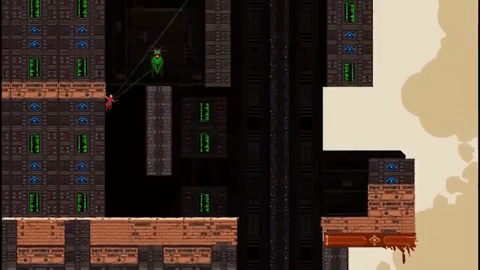Demo Reel
Demo Reel
Demo Reel
Demo Reel

The Tower
Unity
Combat and Technical Designer
The Tower 2D is a fast-paced action platformer that attempts to add a puzzle-esque element to its approach to combat. It is inspired by a previous project, “The Tower 3D”, and was created partially as a design challenge for us, seeing how a change in perspective changes the game. Like the project that inspired it, The Tower 2D has players fighting mysterious cloaked figures to work their way up a mysterious tower and rescue their child. The game I and one other person developed eventually won Best 2D Game at SCAD Entelechy.
The Game Core
Dynamic Puzzle Combat: A 2D environment that allows the player to fully analyze their combat approach while always being on the move.
The Pillars
Pillar 1: Environment as a tool
-
The maze-like design of the level is part of your arsenal to plan out disk bounces and take down enemies.
Pillar 2: Movement-Inspired Enemies
-
The enemy designs are made with the player's movement in mind, slowing, chasing, and tracking the player, all to encourage the full use of the player’s capabilities.
Pillar 3: Level Awareness
-
Adapting to a 2D perspective allows the player to have a more complete view of their surroundings, and we chose to embrace that visibility to help promote a puzzle-like approach to combat.
My Focus
As this was a project with me and one other person, I did all the programming while they did all the art, and we shared or, in some cases, split the design. My main design focus was more to do with combat, designing how the new/old enemies would function in a 2D environment as well as our character and their abilities. This included things like converting a wall run to a wall jump or a knock-back enemy to a slow-down enemy. While I worked on stuff like that, my partner would focus on things like level design, and we would work together on bosses as they qualified as both.

Character
The player was probably the most interesting element from the 3D tower to adapt to 2D. Limitations of 3D, such as a lack of situational awareness, were suddenly no longer an issue. This, in turn, made the player’s combat much more puzzle-like, as their complete awareness of their surroundings made planning bounce shots much more manageable. With this shift to a more puzzle-like approach to the player’s combat also came the concept of more unique disk abilities as the awareness provided more design opportunities. One example is the time disks you unlock after the first boss fight. These disks allow the user to teleport back to their location when they threw the disk, a resource that can be valuable during risky maneuvers. Disks like this only work well with the good sense of environmental awareness provided by 2D.

Boss Fights
When designing the Boss fights of the tower 2D, the main goal was to push further on the idea of combat dependent on treating the level as a puzzle. Our first Boss fight separates the encounter room into three sections, where each moves through time throughout the fight. At the start of the fight, the entire room moves, and as it progresses, different sections move in different orders. These moves are telegraphed to the player to allow them to use their knowledge of the same room across different time periods to their advantage in taking out the enemies and getting a hit on the boss. We had a boss who was always climbing and firing attacks at the player for the second boss fight. This created an environment where the player had to know how best to keep climbing and switch sides when necessary. One of our goals when designing these two boss fights was to have the player be the aggressor in these situations, with bosses either running away or making no attacks at all. We wanted the tower to feel like an unwelcome place the player was entering and not necessarily malicious.

Enemies
Similar to the tower 3D, the goal for the enemies was to have them encourage the player to use the resources at their disposal as much as possible. For this reason, some enemies, like the sniper and the basic, remained unchanged in their design, while the others were either altered slightly or entirely. The shield enemy in the 3D version turned slowly with the solution to combating them, usually getting behind them somehow before they turned around on you; in the 2D version, their shield always rotated to match your position exactly. This was done to have them emphasize environmental or wall bounce combat. The non-lethal enemy that had previously knocked the player back was changed to emit a wave that slowed them down, a more effective form of movement disruption in a 2D setting. New enemies like the chasers were even introduced to create areas where the player felt an anxious force rushing them through it to get out alive.






